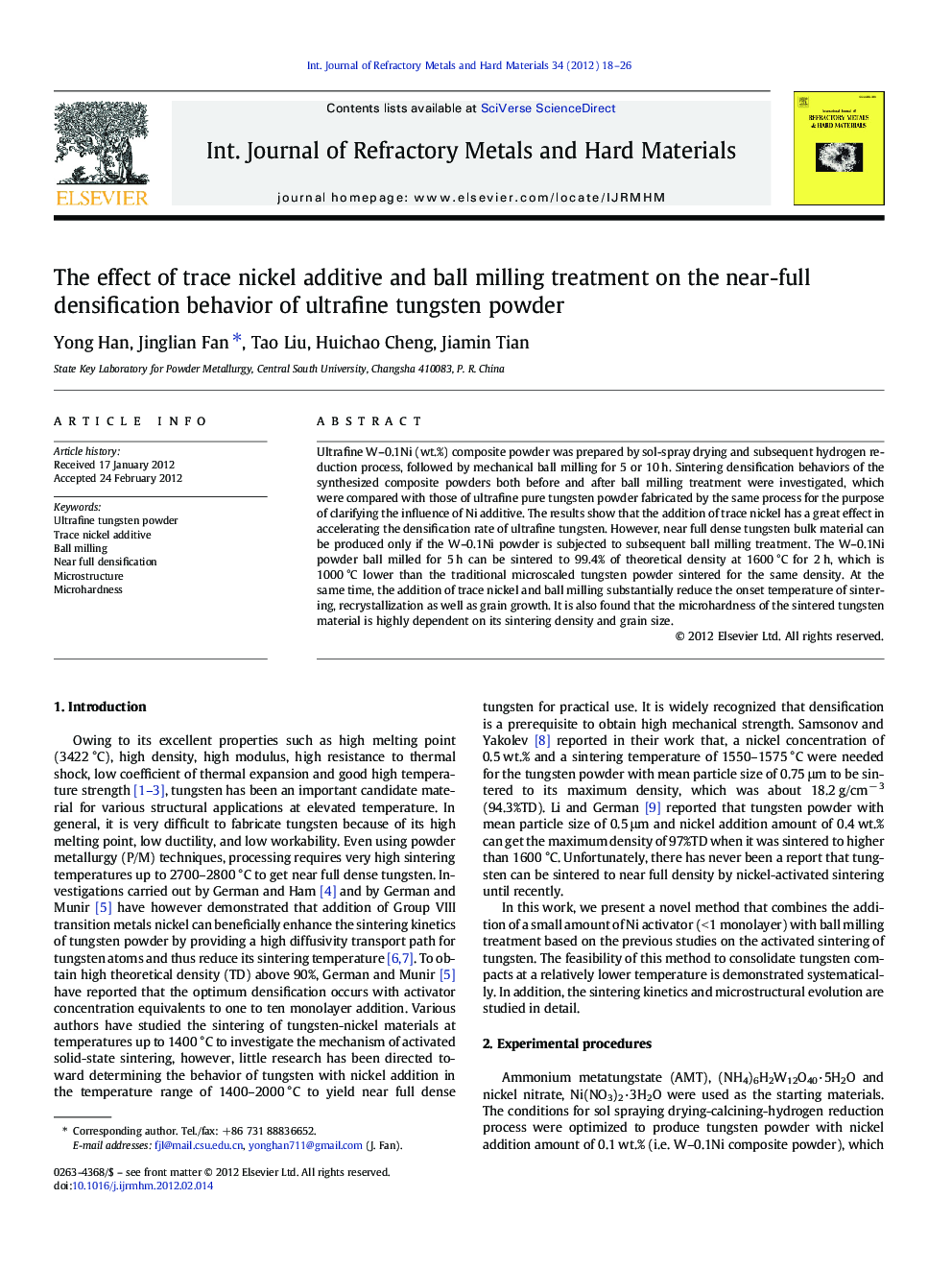| Article ID | Journal | Published Year | Pages | File Type |
|---|---|---|---|---|
| 1603788 | International Journal of Refractory Metals and Hard Materials | 2012 | 9 Pages |
Ultrafine W–0.1Ni (wt.%) composite powder was prepared by sol-spray drying and subsequent hydrogen reduction process, followed by mechanical ball milling for 5 or 10 h. Sintering densification behaviors of the synthesized composite powders both before and after ball milling treatment were investigated, which were compared with those of ultrafine pure tungsten powder fabricated by the same process for the purpose of clarifying the influence of Ni additive. The results show that the addition of trace nickel has a great effect in accelerating the densification rate of ultrafine tungsten. However, near full dense tungsten bulk material can be produced only if the W–0.1Ni powder is subjected to subsequent ball milling treatment. The W–0.1Ni powder ball milled for 5 h can be sintered to 99.4% of theoretical density at 1600 °C for 2 h, which is 1000 °C lower than the traditional microscaled tungsten powder sintered for the same density. At the same time, the addition of trace nickel and ball milling substantially reduce the onset temperature of sintering, recrystallization as well as grain growth. It is also found that the microhardness of the sintered tungsten material is highly dependent on its sintering density and grain size.
► Sol spray drying is used to prepare ultrafine W powder with 0.1wt.%Ni additive. ► Ball milling is adopted to further activate ultrafine W–0.1Ni composite powder. ► Trace nickel in joint with ball milling greatly improve the sinterability of W. ► W–0.1Ni powder ball milled for 5 h can be sintered to 99.4%TD at 1600 °C. ► Microstructure evolution during sintering is investigated in detail.
